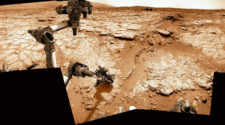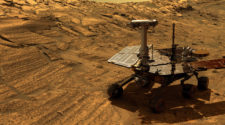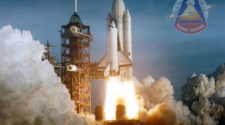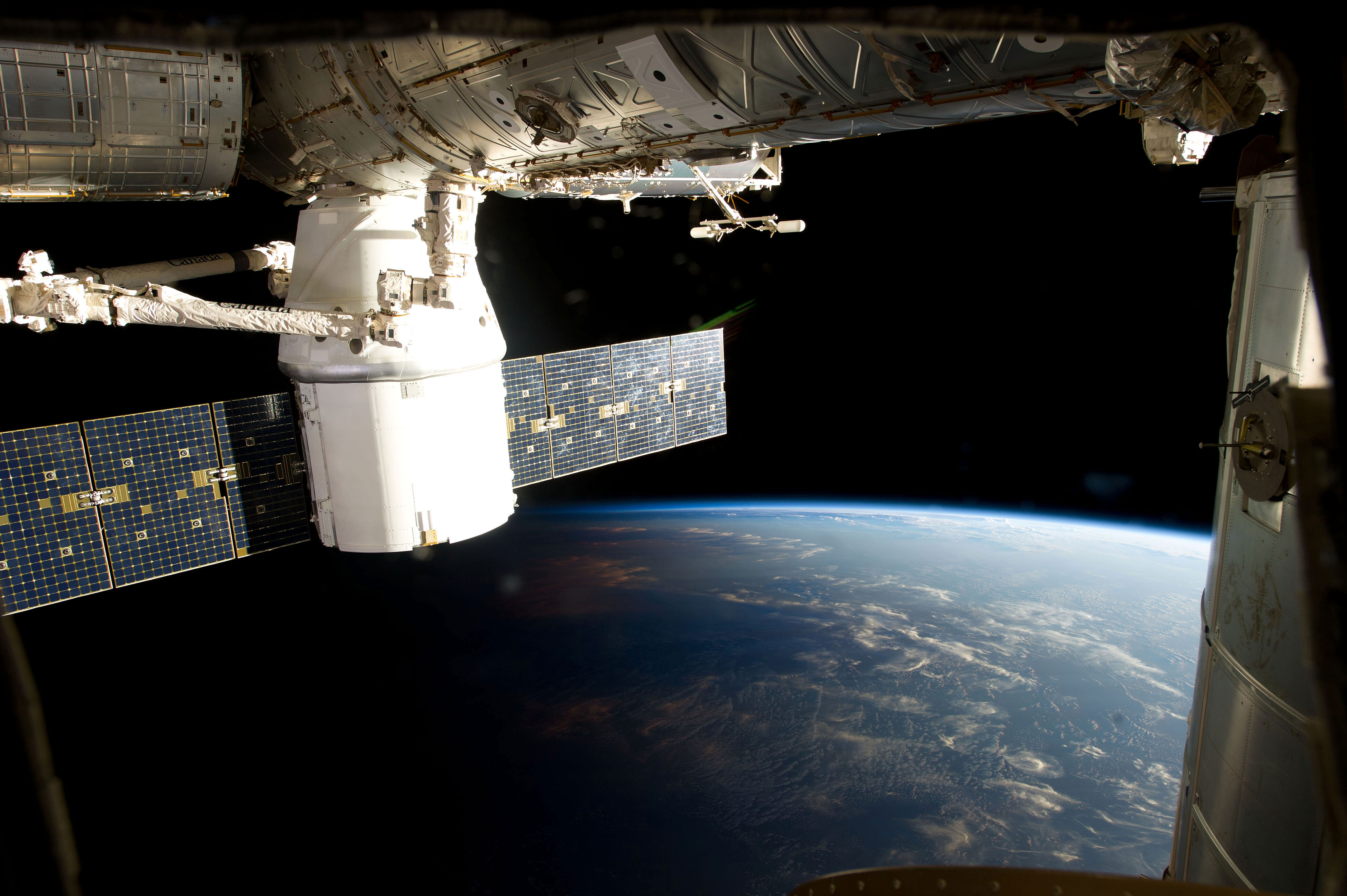
“3…2…1…and liftoff of the Falcon 9 rocket and Dragon, SpaceX continues America’s mission to re-supply the International Space Station from U.S. soil.”
In 2006, SpaceX, a private rocket and spacecraft development company led by Elon Musk, began plowing the path for a new generation of spaceflight, with the launch of the Falcon 1 rocket. In June 2010, with the conclusion of the Shuttle era around the corner, its successor, Falcon 9, stood upon the launchpad poised to make its grand entrance into the aerospace world. The Falcon family was introducing itself, one test flight at a time. I was a witness to the Falcon 9 taking its maiden flight that day, and I was immediately enchanted with this ‘little company that could’.
The sound of the launch being broadcast on the radio filled the air. As the countdown came to an end, I watched the Falcon 9 come to life as it lifted up and away from my view. It was a monumental event for SpaceX and several successful landmark missions would soon follow this historic moment.
In December 2010, the Dragon, a reusable spacecraft designed to eventually carry crew and cargo, was launched aboard the Falcon 9. It was then safely returned back to the ground, making SpaceX the first commercial company to effectively carry out the launch and recovery of a spacecraft. On another demonstration flight in May 2012, Dragon was delivered to orbit again by the Falcon 9 to berth with the International Space Station, be opened by the ISS crew and emptied of the supplies inside, then detach and return safely to Earth. The completed mission was a flawless display of Dragon’s capability.
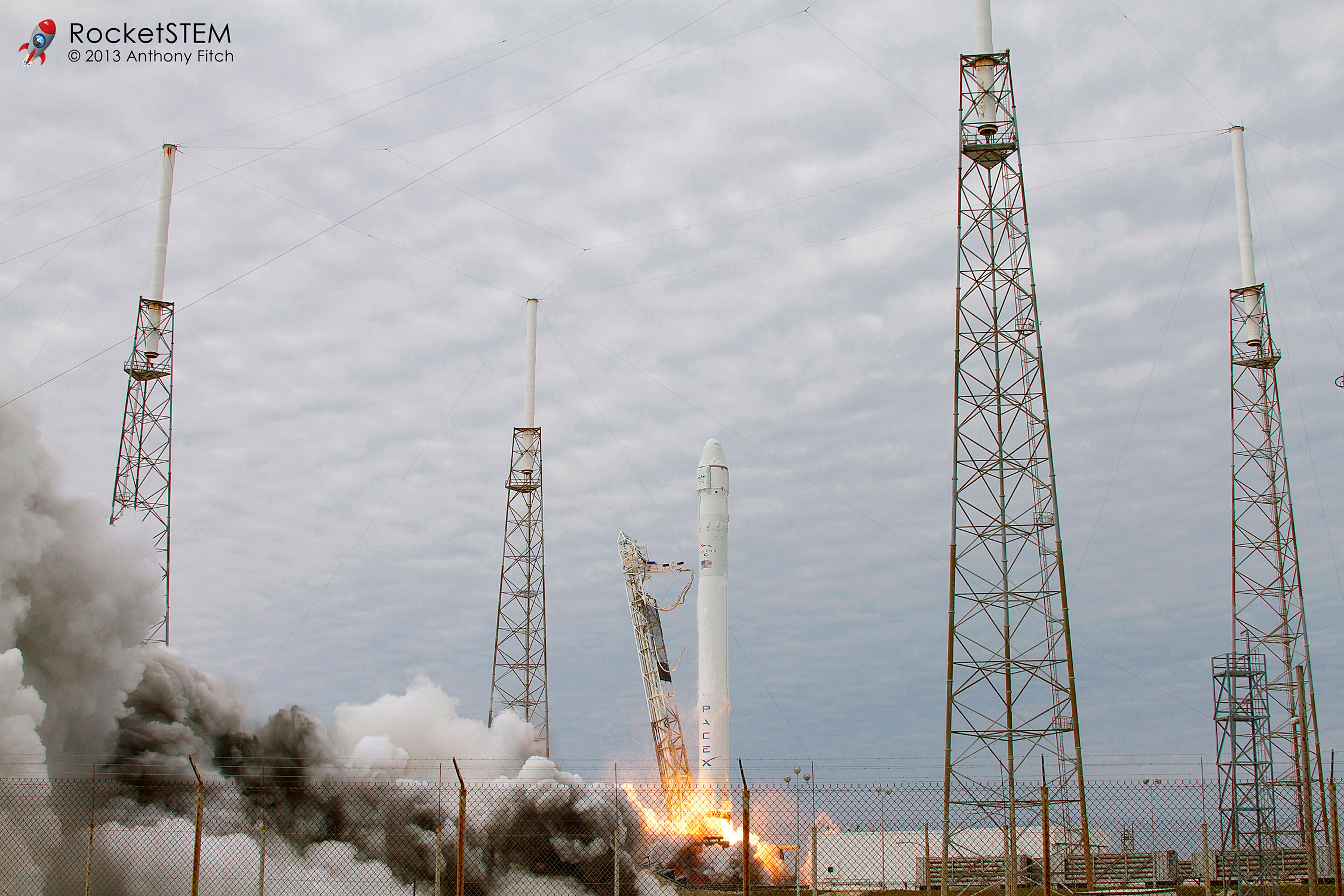
In October 2012, Dragon would be delivered again to the ISS, this time on its first official cargo re-supply mission (CRS-1). This was the first of 12 re-supply missions SpaceX was awarded by NASA. Though a problem occurred when one of the first stage engines shut down on the Falcon 9, its primary job of delivering Dragon safely into orbit after adjusting its flight path was still accomplished. It again successfully berthed to the ISS, and remained attached until it returned to Earth, landing in the Pacific Ocean.
On March 1, 2013, I had the privilege of witnessing the second commercial re-supply mission (CRS-2) from 525 feet above the ground. From the top of the roof of the Vehicle Assembly Building, with the wind whipping the chilly air around, Launch Complex 40 was bathed in the late morning sunlight when intermittent cloud cover was forgiving. Falcon 9 stood proud with Dragon, ready to fly. Though the rocket is on the smaller side, it has a powerful presence. As Shakespeare wrote, “Though she be but little, she is fierce!”
I had an eagle-eye view as the Falcon 9 rose up from its launchpad, with Dragon leading the way through the cloud covered sky. Its sound punched through the wind, letting out a low intense rumble as it headed for orbit, getting louder and louder with each second that passed. As the rocket rose higher, its sound started to fade, until it completely disappeared. The Falcon 9 had performed its job – and it was time for Dragon to commence its part of the mission. Soon it would meet up with the ISS for the delivery of supplies and experiments to the crew.
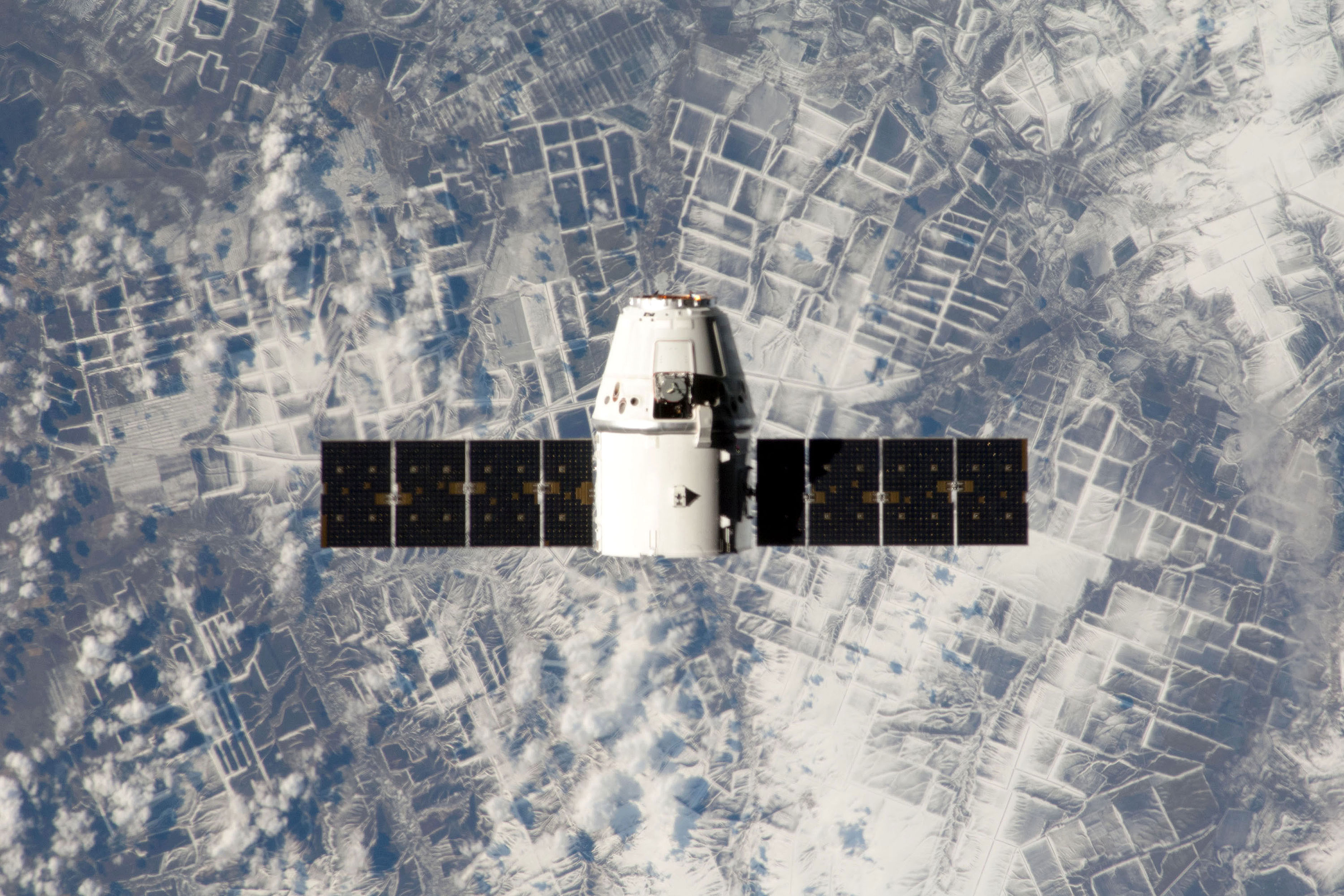
The arrival of Dragon to the ISS was delayed due to a minor setback with its oxidizer tanks, but the ground crews worked quickly to identify the problem, and get it back on track. On March 3 it was successfully captured and berthed to the ISS. It delivered 2,300 pounds of cargo to the residents on board, stayed attached for 22 days, and was then filled with over 3,000 pounds of cargo to carry home. On March 26, Dragon completed its mission and returned to Earth. It splashed down in the Pacific Ocean a few hundred miles off the coast of Baja California (which is a neat coincidence since “baja” means “come down” in Spanish).
SpaceX has ambitious plans for the future. Missions are already scheduled on its manifest through 2017 for several customers including the Canadian Space Agency, Orbcomm, Iridium Communications, Asia Satellite Telecommunications and Thaicom. These re-supply, satellite placement and launch services will also continue to serve NASA along with the other companies that have placed their trust in SpaceX. Manned flights may begin to Low Earth Orbit (LEO) in 2015.
Opinions about the ending of the Shuttle program vary. Some feel that we were not prepared to end it without having something else in the works. Some feel that it motivated us to look towards the future. With determined companies like SpaceX pushing forward with success after success, they demonstrate their competency and capability and create a standard for other commercial companies entering the race to live up to. SpaceX provides us with an exciting snapshot of the future, as they continually prove to the world, that determination can decide destiny.
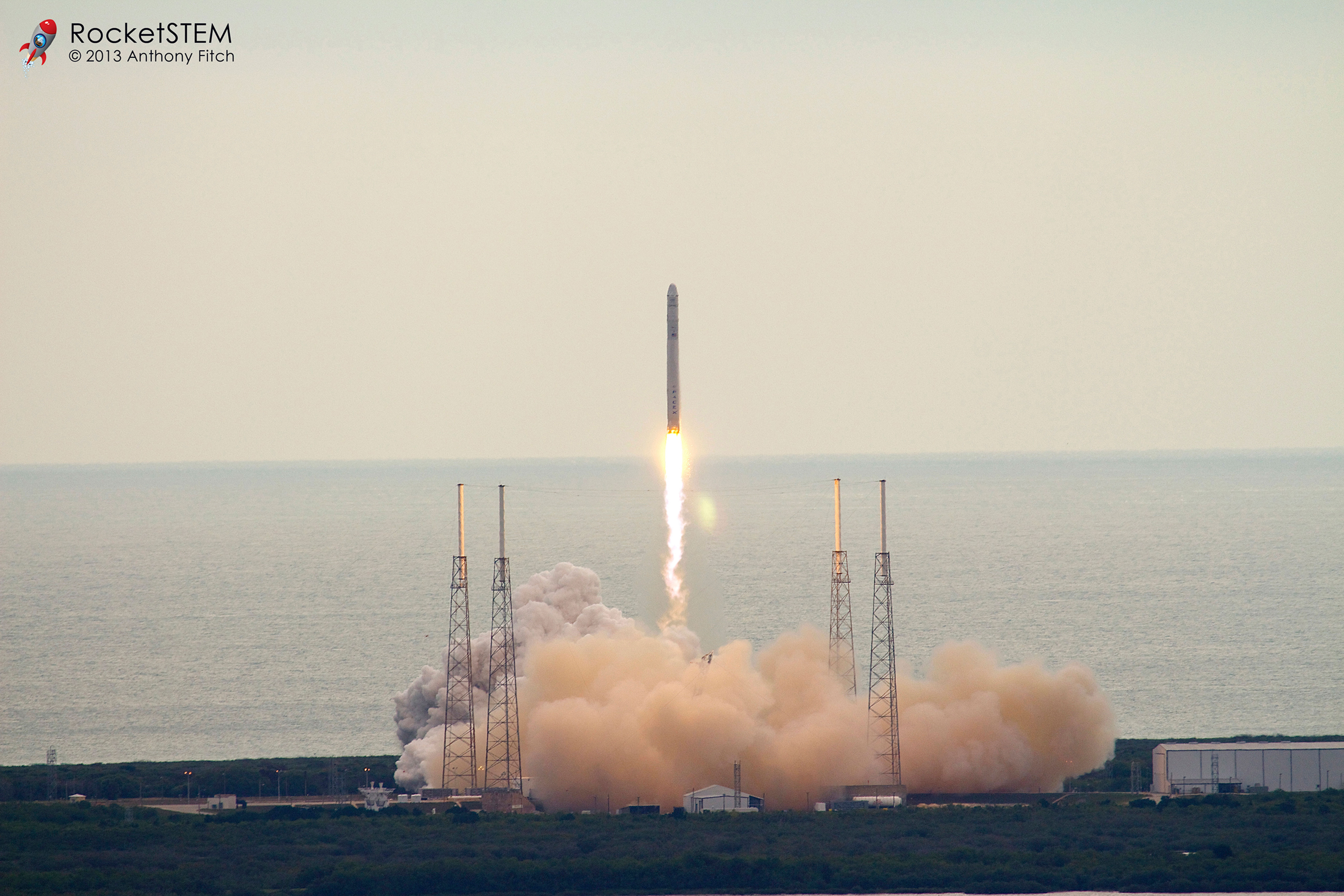
Fast Facts
The name game: The Falcon 9 got its name from the Millennium Falcon – the spacecraft commanded by Han Solo in the original Star Wars trilogy. The ‘9’ comes from the nine first-stage Merlin engines that propel the rocket. Dragon was named after the fictional character Puff the Magic Dragon because in 2002, critics thought that the original goals SpaceX had in mind seemed to exist more in the realm of make-believe.
It’s only rocket science: The Falcon 9 was developed entirely in the 21st century, from start to finish. It is all-American, with its design, development, and testing completed in the United States by SpaceX. It took only four and a half years to take the idea off of paper, and turn it into a launched rocket, with a cost of less than $300 million. In order to minimize the amount of stage separations, and therefore reduce the probability of a failure during flight, the Falcon 9 is designed with only 2 stages. In the event a first stage engine fails, the rocket can still carry out its mission. At sea-level, the engines provide 855,000 pounds of thrust, increasing to almost 1,000,000 pounds of thrust as it blasts through the atmosphere. The Falcon 9 has a 100 percent primary mission success rate.
Capture a Dragon: When the Dragon spacecraft successfully berthed to the International Space Station in May 2012, it was the first commercial spacecraft to ever accomplish this feat.
Give me some space: For cargo transport, Dragon has a pressurized capsule and an unpressurized trunk. It can carry 7,297 pounds of cargo between the two spaces.
Powering the Dragon: During flight, two solar array wings power Dragon. The eight panels produce over 5 kilowatts of power, but when Dragon enters darkness, (about 40% of the time when it is in low-Earth orbit) its surplus power takes over and recharges its batteries.
Withstanding reentry: It was built with a heat shield made of PICA-X, which can withstand the extreme heat generated upon reentry from a lunar return mission. The design of the heat shield was completed by NASA and brought to life by SpaceX. The spacecraft’s shape creates lift during reentry, while roll control is provided by 18 Draco thrusters, ensuring it stays on course for a smooth landing.
A manned future: For now, it only carries cargo, but it is being refined to carry a flight crew as early as 2015.

